What was happening in July? Here’s our Hōngongoi update – all items collected in one handy page!
News
People
Media
Opinion
Dyke Diary
Ngā pitopito kōrero, news
National/multiple centres
Political parties, policies and lesbians
Regional
Lesbians at Te Manawa, Palmerston North
Out of the arts closet in Auckland
Charlotte Museum plans
Political parties, policies and lesbians
The election is approaching, and the politicking has started. What do political parties offer lesbians? Alison reviewed available policies in late June.
Currently, we have 119 Members of Parliament: 62 general electorate members, 7 representing Māori electorates, and 50 selected from party lists; the parliament seating plan illustrates this. Follow links for information about political parties in parliament about elections.
I’m looking for mention of lesbians, of course. ‘Women’ would be ok. I’m also interested 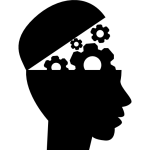 in the frequency and context of words like ‘Māori’ and ‘Treaty’/’Tiriti’. And before starting, I unilaterally decided that important policies affecting lesbians are education, employment, health, housing and violence against women.
in the frequency and context of words like ‘Māori’ and ‘Treaty’/’Tiriti’. And before starting, I unilaterally decided that important policies affecting lesbians are education, employment, health, housing and violence against women.
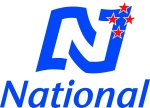 National has led the government for the last nine years, in power due to alliances with Peter Dunne/United Future, ACT and the Māori Party.
National has led the government for the last nine years, in power due to alliances with Peter Dunne/United Future, ACT and the Māori Party.
National’s website lists 16 policies, which include ‘National’s comprehensive housing plan‘ and ‘Helping more Kiwis buy their first home, ‘A better education for our children‘, ‘Better healthcare‘. ‘An open and prosperous New Zealand‘ and ‘10 ways our economic plan is working‘ both refer to jobs; ‘Supporting safer families‘ refers to ‘family violence’ – not ‘women’.
National’s ‘comprehensive housing plan’ doesn’t mention women or children once.  ‘Better healthcare’ has one mention: Pharmac is ‘looking at’ funding new treatments including ‘to help women cope with menopause’. Women are not mentioned in connection with jobs, and there is no reference to pay inequity or Living Wage. There is no mention of women or girls in ‘A better education for our children’.
‘Better healthcare’ has one mention: Pharmac is ‘looking at’ funding new treatments including ‘to help women cope with menopause’. Women are not mentioned in connection with jobs, and there is no reference to pay inequity or Living Wage. There is no mention of women or girls in ‘A better education for our children’.
Villainesse, as part of their ‘The Pitch’ series, asking all parties currently in parliament why they deserve the vote of young women, have an interview with Paula Bennett, Minister for Women and Deputy Prime Minister.
Conclusion: No surprises, no interest in women from the National Party.
 United Future has six policies. ‘Rent to own’ is the only one addressing my interests; it doesn’t mention women once. A positive note is the Refugee policy includes ‘Immediately double the refugee quota [to 1,500 per year] to address the growing refugee crisis that the world is facing and to make sure we do our part.’
United Future has six policies. ‘Rent to own’ is the only one addressing my interests; it doesn’t mention women once. A positive note is the Refugee policy includes ‘Immediately double the refugee quota [to 1,500 per year] to address the growing refugee crisis that the world is facing and to make sure we do our part.’
Conclusion: Disappointing.
 ACT’s 13 policies include Housing, Education and ‘Welfare and the Family‘. This last makes no mention of women, but does reference people – mostly ‘parents’ – for a range of punitive restrictions on benefits and other government supports. ACT advocates for ‘partnership’ (charter) schools; the policy makes no mention of women or girls. Neither ACT’s housing policy nor the two-page ‘detailed Housing Affordability Policy‘ refer to women. There are no policies on employment, health or violence against women.
ACT’s 13 policies include Housing, Education and ‘Welfare and the Family‘. This last makes no mention of women, but does reference people – mostly ‘parents’ – for a range of punitive restrictions on benefits and other government supports. ACT advocates for ‘partnership’ (charter) schools; the policy makes no mention of women or girls. Neither ACT’s housing policy nor the two-page ‘detailed Housing Affordability Policy‘ refer to women. There are no policies on employment, health or violence against women.
Conclusion: ACT is the most right-wing party in government, so no surprises, but continued disappointment.
 The Maori Party policy document at time of writing has not been updated from Election 2014: 29 pages with sections on Jobs, Health, Housing, Education, Economic development and Te Tiriti. There is, however, only one mention of women and none of wāhine: ‘invest funding in frontline services at Women’s Refuges throughout Aotearoa to enable them to address the huge numbers of police callouts’.
The Maori Party policy document at time of writing has not been updated from Election 2014: 29 pages with sections on Jobs, Health, Housing, Education, Economic development and Te Tiriti. There is, however, only one mention of women and none of wāhine: ‘invest funding in frontline services at Women’s Refuges throughout Aotearoa to enable them to address the huge numbers of police callouts’.
Conclusion: Hoping for more enlightened policies to be announced soon.
The opposition parties are Labour and the Greens. There’s also NZ First, not really/reliably allied with any other party.
 Labour has a detailed Housing plan (
Labour has a detailed Housing plan (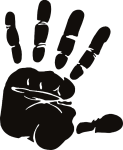 ‘Fixing the Housing Crisis‘) but no mention of women. There are two parts to their Mental Health policy: Primary Mental Health Teams and Youth Mental Health, but no mention of women or girls. ‘Ready for work’ is focussed on unemployed young people, no mention of women or girls; ‘Working Futures Plan’ provides for three years of free post-school education, no mention of women or girls; ‘Our Work Our Future’ is about creating more jobs – no mention of women or girls; Dole for Apprenticeships, ditto. Labour will also double the refugee quota.
‘Fixing the Housing Crisis‘) but no mention of women. There are two parts to their Mental Health policy: Primary Mental Health Teams and Youth Mental Health, but no mention of women or girls. ‘Ready for work’ is focussed on unemployed young people, no mention of women or girls; ‘Working Futures Plan’ provides for three years of free post-school education, no mention of women or girls; ‘Our Work Our Future’ is about creating more jobs – no mention of women or girls; Dole for Apprenticeships, ditto. Labour will also double the refugee quota.
 Villainesse, as part of their ‘The Pitch’ series, asking all parties currently in parliament why they deserve the vote of young women, have an interview with Andrew Little, Leader of the Opposition and Louisa Wall.
Villainesse, as part of their ‘The Pitch’ series, asking all parties currently in parliament why they deserve the vote of young women, have an interview with Andrew Little, Leader of the Opposition and Louisa Wall.
And Rainbow Labour have a Facebook page: “an active voice for gay, lesbian, bisexual, trans*, intersex, queer, takataapui, fa’afafine, fakaleiti, and all Rainbow Communities in the Labour Party and other political forums”.
Conclusion: Need to do better – higher expectations, so a greater level of disappointment.
 The Greens have 26 policies listed on their main page, and another long list under ‘other policies‘. Their ‘Budget for all Mothers‘ is for parents. Housing is addressed in ‘Homes Not Cars’, ‘Residential Tenancies (Safe and Secure Rentals) Amendment Bill’, ‘Home For Life’, ‘Faster into Homes’; Education is addressed in ‘Te reo Māori in schools’; no mention of women or girls in any.
The Greens have 26 policies listed on their main page, and another long list under ‘other policies‘. Their ‘Budget for all Mothers‘ is for parents. Housing is addressed in ‘Homes Not Cars’, ‘Residential Tenancies (Safe and Secure Rentals) Amendment Bill’, ‘Home For Life’, ‘Faster into Homes’; Education is addressed in ‘Te reo Māori in schools’; no mention of women or girls in any.
Jan Logie’s Domestic Violence – Victims’ Protection Bill is currently in Select Committee, with the report due 8 September. Jan’s Equal Pay Amendment Bill failed to pass a first reading in May this year.
‘Other’ policies include Education, Health, Housing and sustainable communities, no mention of women or girls. The Work and employment policy has one mention of women, and the Maori issues policy includes mention of wahine Māori and women.
Near the end of the alphabetical list, however, it does get a bit more exciting: policies on Sexual Orientation and Identity (one mention of lesbian in the full policy), Tiriti o Waitangi and Women, with again one mention of ‘lesbian’ in the seven page policy .
The Greens will progressively increase the refugee quota to 4,000 people per year after six years.
And Rainbow Greens also have a Facebook page: “We promote the rights and welfare of all queer/rainbow people”.
Conclusion: Phew! At last some evidence of women and lesbians, though could still do better.
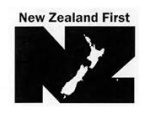 New Zealand First have 24 policies with considerable detail; no reference to women or girls other than as noted in brackets: Labour and employment, Maori affairs (unclear reference to Maori Women’s Welfare League), Education, Social development (‘Increase funding to Women’s Refuge’ and ‘Encourage the use of temporary special measures, such as targeted scholarships, to encourage young women and young men into non-traditional industries’), Health (‘require improved provision of ante-natal classes, maternity services for rural, Maori and Pacific Island women’ and ‘funding to assist the diagnosis of osteoporosis for women over 50 years’), Housing.
New Zealand First have 24 policies with considerable detail; no reference to women or girls other than as noted in brackets: Labour and employment, Maori affairs (unclear reference to Maori Women’s Welfare League), Education, Social development (‘Increase funding to Women’s Refuge’ and ‘Encourage the use of temporary special measures, such as targeted scholarships, to encourage young women and young men into non-traditional industries’), Health (‘require improved provision of ante-natal classes, maternity services for rural, Maori and Pacific Island women’ and ‘funding to assist the diagnosis of osteoporosis for women over 50 years’), Housing.
Their Maori affairs policy also refers to the Treaty of Waitangi, not in a supportive way: ‘The Treaty should be a source of national pride and unity and not used to expand the separate rights of Maori or anyone else. Too often the Treaty now divides, polarizes and isolates us’.
Conclusion: Unconvincing.
Keep an eye on Villainesse – only the two interviews linked above (National and Labour) have been published at time of writing, but more are to come.
Remember, there are three out lesbians campaigning in the 2017 election: Louisa Wall (Labour) and Jan Logie (Greens) are current MPs, and Elizabeth Kerekere is standing for the Greens for the first time.
Lesbians at Te Manawa
Palmerston North’s Te Manawa Museum of Art, Science and History has hosted three exhibitions by or about lesbians and queer women since May and one of them may tour to a museum near you.
Topp Twins exhibition
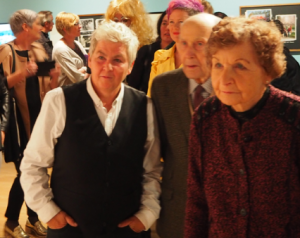 Feedback from visitors to The Topp Twins, an exhibition for New Zealand, has been “really good”, says Graeme Beal, Te Manawa Marketing Manager, and Te Manawa has had contact from four museums wanting to host it. Sian Torrington, the Wellington-based lesbian/queer artist who curated the exhibition, expects it to tour for the next two years.
Feedback from visitors to The Topp Twins, an exhibition for New Zealand, has been “really good”, says Graeme Beal, Te Manawa Marketing Manager, and Te Manawa has had contact from four museums wanting to host it. Sian Torrington, the Wellington-based lesbian/queer artist who curated the exhibition, expects it to tour for the next two years.
Sian started her research for the exhibition by immersing herself in the material the twins had recently deposited with the national archives at the Alexander Turnbull Library in Wellington.
“There were thousands of items – news clippings, fan mail, album covers, invoices, notes and sketches – I tried to figure out from that what stories we needed to tell. I wanted the exhibition to cover their whole lives and their social history context.”
The show is divided into sections – Who are the Topp Twins?; Love for New Zealand; becoming the characters; on the road; activism; being out, being ourselves; and doin’ alright. Once Sian had worked out the stories and objects she wanted to feature and checked them with the twins, she interviewed them for two hours; video clips are included. The Topps also brought original costumes and objects to the interview that they wanted included.
As an artist, Sian found the twin’s construction of their own career “really inspiring – how they built their own audiences through busking. In the interview they talked about that a lot. They didn’t want a producer deciding their sound.”
 The exhibition opening was “incredible, really packed,” says Sian. “Jools and Linda brought their parents (top), their brother and his partner and really loved it – that was the most important response for me.” The exhibition includes their sketches for the gypsy caravan in which they toured, hand-written notes for songs, and original costumes.
The exhibition opening was “incredible, really packed,” says Sian. “Jools and Linda brought their parents (top), their brother and his partner and really loved it – that was the most important response for me.” The exhibition includes their sketches for the gypsy caravan in which they toured, hand-written notes for songs, and original costumes.
One popular interactive section enables visitors to dress up as five of the twins’ pairs of characters – Ken and Ken, Camp Mother and Camp Leader, Prue and Dilly, Westie chicks Raylene and Brenda, and the Gingham sisters – in front of a mirror and read scripts for the characters. “People spend a lot of time there,” says Graeme. “On opening night two city councillors dressed up as Ken and Ken and read the script,” followed by the twins, above.
The protest part of the exhibition includes clips from the documentary Untouchable girls and material about the twins’ activism. It also enables visitors to write their own mini placards about issues that concern them for display, starting with those written by the twins on opening night (below).
One of the common reactions from visitors, says Graeme is how many “didn’t realise the number of issues the Topp twins have been involved in and all the causes they’ve championed.” Exhibition events include a screening of the Bastion Point: The untold story documentary on July 1; the anniversary of the Springbok Tour on July 19; and a talk on women in the music industry on August 17.
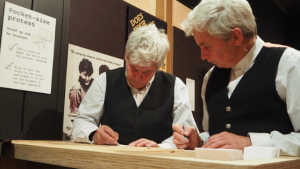 “Young people really enjoy the exhibition, and people are taking their kids,” says Sian. “The Topp Twins are such a phenomenon, they appeal to such a wide audience. I’m really proud of the exhibition; it was such an honour to work with Jools and Linda. I’m 40 and they’re a generation ahead so I was learning about my elders. It was very empowering and strengthening to do.”
“Young people really enjoy the exhibition, and people are taking their kids,” says Sian. “The Topp Twins are such a phenomenon, they appeal to such a wide audience. I’m really proud of the exhibition; it was such an honour to work with Jools and Linda. I’m 40 and they’re a generation ahead so I was learning about my elders. It was very empowering and strengthening to do.”
The exhibition runs until October 27. Jenny R
Butch
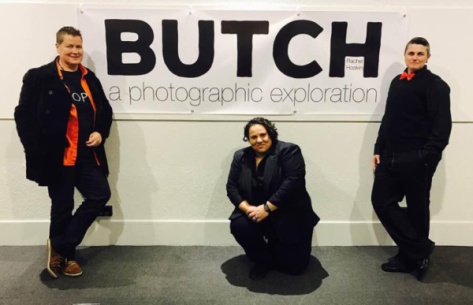 Opening at the same time as the Topp’s exhibition was Butch: A photographic exploration, by lesbian Rachel Hoskin, head of the Creative Industries school at UCol polytechnic and president of pioneering Palmerston North rainbow activist group the Manawatu Lesbian and Gay Rights Association (MALGRA). She is pictured on the right with Jac Lynch, left, and one of her participants, Nik, centre.
Opening at the same time as the Topp’s exhibition was Butch: A photographic exploration, by lesbian Rachel Hoskin, head of the Creative Industries school at UCol polytechnic and president of pioneering Palmerston North rainbow activist group the Manawatu Lesbian and Gay Rights Association (MALGRA). She is pictured on the right with Jac Lynch, left, and one of her participants, Nik, centre.
Rachel had hoped to study audience reactions to butch women by showing her 1.2m2 portraits on the outside of the museum, but the cladding couldn’t hold the images safely and they hung in the atrium for more than a month.
W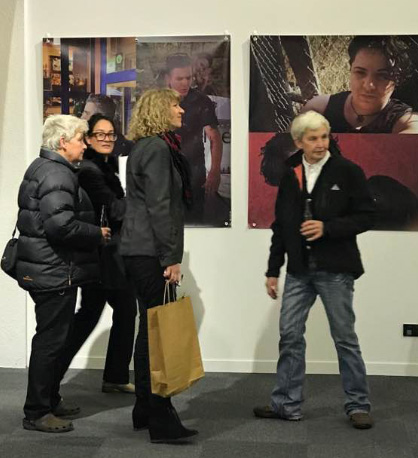 hile staff didn’t see the reactions of people walking through, Marketing Manager Graeme Beal reported a “really good response from the “personal and raw” images.
hile staff didn’t see the reactions of people walking through, Marketing Manager Graeme Beal reported a “really good response from the “personal and raw” images.
Rachel says that LGBT people who’d visited Te Manawa “loved the scale of the images and said having a room full of butch women were very cool. The Topp twins looked at the detail of the images; they loved the love heart holding the word ‘nanna’ on one woman.”
In the next few months, Rachel plans to use the images in a boosted Facebook post to survey viewer responses to butch women.
The exquisite wound
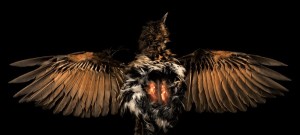 The other major exhibition, on the other side of the complex from the Topps, is by Auckland queer artist Rebecca Swan, who collaborated with a composer, engineer, light artist and scientist. The exquisite wound raises questions about how we cope with wounds and death, using dead animals, photography, video, a smoke-bubble machine and a soundtrack. It runs until October 8.
The other major exhibition, on the other side of the complex from the Topps, is by Auckland queer artist Rebecca Swan, who collaborated with a composer, engineer, light artist and scientist. The exquisite wound raises questions about how we cope with wounds and death, using dead animals, photography, video, a smoke-bubble machine and a soundtrack. It runs until October 8.
MALGRA partnership
A giant rainbow flag has also dominated the museum foyer since May, to celebrate Te Manawa’s new partnership with MALGRA, which now holds its meetings in the complex.
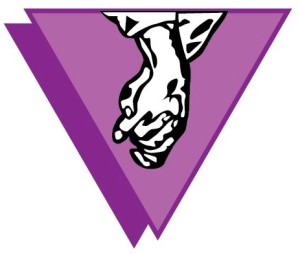 Te Manawa has organised a welcome morning tea for MALGRA on Sunday July 9 at 10.30am, the anniversary of the Homosexual Law Reform Bill. MALGRA have invited their Facebook group as well as organisations with which they work closely, such as PrideNZ from Wellington.
Te Manawa has organised a welcome morning tea for MALGRA on Sunday July 9 at 10.30am, the anniversary of the Homosexual Law Reform Bill. MALGRA have invited their Facebook group as well as organisations with which they work closely, such as PrideNZ from Wellington.
Graeme Beal hopes that some of MALGRA’s 40th anniversary celebrations will be held in the complex in October.
“During the national Museums Aotearoa conference in May, the Charlotte Museum held a pop-up exhibition at Te Manawa which was “really well received”, he says. That made four concurrent lesbian/queer women’s exhibitions at the museum, yet there were no complaints; just positive comments from local lesbians and queer women about “how welcome it made them feel in the museum when they don’t usually feel represented”, says Graeme.
Jenny Rankine
Out of the arts closet
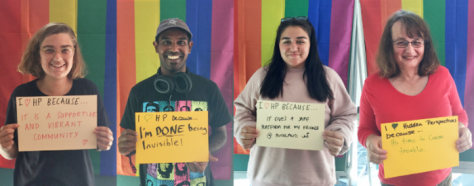 The success of Hidden Perspectives NZ: Bringing the arts out of the closet means that its mix of free film screenings and talks about queer research will continue at the University of Auckland city campus for arts students, staff and the general public.
The success of Hidden Perspectives NZ: Bringing the arts out of the closet means that its mix of free film screenings and talks about queer research will continue at the University of Auckland city campus for arts students, staff and the general public.
The programme is co-directed by Caroline Blyth, below, Rainbow Arts Equity Liaison, senior lecturer in Theology and queer woman, with Zoe Henry and Chip Matthews in student engagement. Caroline’s 0.1FTE position is the only faculty-based Rainbow support role in the university.
The programme started with a student meeting a year ago, she says; students wanted more queer visibility on campus and ways of bringing queer issues into their studies that also acknowledged other issues such as ethnicity, class and ability.
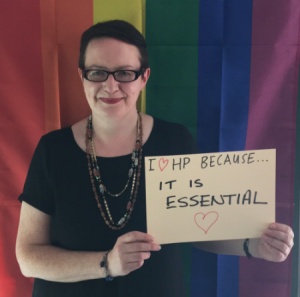 Caroline adapted a pioneering public engagement project from the University of Sheffield in the UK, called Hidden Perspectives: Bringing the Bible out the Closet, which aimed to engage people underrepresented in biblical studies due to gender, class, ethnicity, sexuality and disability.
Caroline adapted a pioneering public engagement project from the University of Sheffield in the UK, called Hidden Perspectives: Bringing the Bible out the Closet, which aimed to engage people underrepresented in biblical studies due to gender, class, ethnicity, sexuality and disability.
In Auckland, Hidden Perspectives includes an open Facebook page, a closed Facebook group of more than 70, an email list and a blog. The programme started with 15 of the email list and now has more than 100, says Caroline. “We’ve developed a core group of students keen to be involved.”
All the queer movie screenings include a panel of at least two students and a staff member discussing the film and the issues it raises over hot drinks and cake. She says the ‘hidden curriculum’ of the heterosexual norm comes up in seminar and movie discussions. Their latest, the movie Carol, attracted 40 people
Caroline teamed up with Gender Studies lecturers for a joint seminar programme featuring lesbian, takatāpui, queer, trans and bisexual researchers talking about their studies of health, queer readings of Bible and ancient history texts, and takatāpui and trans identities.
She plans another series of talks about My Queer Research for the second half of the year. Most HP events are held in the late afternoon. Caroline aims HP events at “all queer people; we’re trying not to identify queerness with any one group”. She’s planning a first birthday party in October, the anniversary of the first HP film screening.
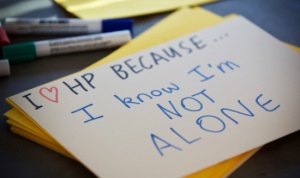 When asked about feminism and queerness, she said there is “potential for feminist and queer concerns to come from the same place, our experiences of marginalisation and oppression” and expanded on the subject in a later email. She feels “uneasy” about recent discussions of “trans women’s ‘rights’ to their identities, because they seem to be just another way of casting doubt on trans people’s sense of self; that’s such a big part of transphobic discourse already that it has to be tackled.”
When asked about feminism and queerness, she said there is “potential for feminist and queer concerns to come from the same place, our experiences of marginalisation and oppression” and expanded on the subject in a later email. She feels “uneasy” about recent discussions of “trans women’s ‘rights’ to their identities, because they seem to be just another way of casting doubt on trans people’s sense of self; that’s such a big part of transphobic discourse already that it has to be tackled.”
She’s concerned that “by trying to define who is a ‘woman’, we run the risk of excluding anyone (trans, queer or otherwise) who doesn’t fit neatly into our gendered categories.” On the other hand, she dislikes the term TERF (trans-exclusionary radical feminist), and thinks “it gets bandied around too easily at times, but the reality is that some feminist discussions are trans exclusionary.”
“My vision may be hopelessly idealistic, but if we can stop excluding each other and start embracing our shared experiences and identities, then we might be able to work together to tackle heterosexism and cissexism, and all the violence and oppressions that they create.”
Caroline is Scots, a former nurse who studied theology as a mature student. She and her Kiwi female partner moved here in 2011, and Caroline now identifies as Pākehā.
All HP events are free and open to the public. See HP on Twitter @HPerspectivesNZ, Facebook, WordPress, email Caroline to go on the mailing list, or see Dyke Diary.
Jenny R
Charlotte Museum plans
The Charlotte Museum of lesbian culture in Auckland is considering a range of future operating models in line with its new strategic direction, which should be available on its website soon.
“One possibility is an office room with a small gallery space,” says board member Jo Crowley, “with exhibitions rotated from the bulk of the collection in storage.” This model relies on low-cost storage and hiring venues for events.
The museum board is keen to hear from any women who know of reasonably central, waterproof storage space about the size of a double garage, where humidity and temperature can be controlled.
The museum faces a 20 percent rent increase from $1,500 to $1,800 a month in its New Lynn venue in west Auckland, and is again on an Auckland Council watch list for new council premises.
The organisation’s AGM will be held in October, and the board has introduced a two-yearly cycle for board membership. The term for half the board will end in alternate years to ensure continuity, if existing members decide to move on at the end of their term.
The museum welcomes contact from volunteers and anyone interested in joining the board; email charlottemuseum@gmail.com JR
Nga wāhine, people
Scanning sheep around the country
Being the Daughters of Ally
The challenges of solo farming
Scanning sheep around the country
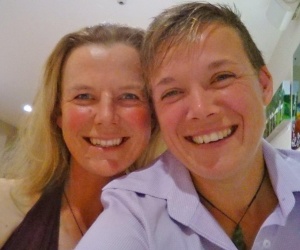 This month, Sophie Wilkinson (on the left with partner Mel) will be found sitting on different farms in Southland and Otago, scanning pregnant ewes.
This month, Sophie Wilkinson (on the left with partner Mel) will be found sitting on different farms in Southland and Otago, scanning pregnant ewes.
“I use little handheld ultrasound probe which fits in the palm of my hand, with a small monitor in front of me,” she says. “I sit down low in a cut-off car seat next to the crate that holds the sheep, and rub the probe under their belly.”
Imagine the same grey fuzzy screen you see on ultrasounds of human foetuses, but much smaller. Pregnant sheep can only be scanned when the lamb is between 30 and 90 days old, Sophie says.
“I bring the scanning crate, my seat and a three-way drafting system in the back of my ute. We set that up in the yard at the end of the raceway and farmers feed the sheep through.”
“I put a different colour on the sheep depending on how many lambs they’re carrying, how old the fetus is, whether any are already dead, whether any have tumours, infections in the uterus or any abnormality.” Usually about “two in 100 ewes would be carrying a dead lamb,” says Sophie. “Quite often one twin can die; they’re in a separate sac and they mummify.”
Sophie scans “three to four thousand sheep a day; some big clients have 30,000 sheep so I stay for a week. Each farm uses different colours; some farmers don’t like certain colours on the wool, or use a certain colour for sheep going to the works.”
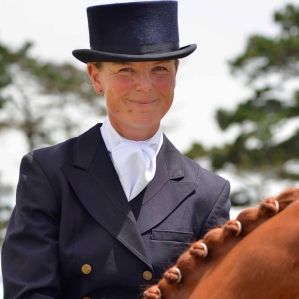 It’s an important service, says South Otago sheep farmer Megan Barclay (see story below); the four percent of ewes that usually aren’t pregnant can be sold, the food reduced for ones carrying singles so they don’t have problems birthing a lamb that’s too big, and “we can get more food to the ones carrying two or three.” Triplets need to be monitored intensely.
It’s an important service, says South Otago sheep farmer Megan Barclay (see story below); the four percent of ewes that usually aren’t pregnant can be sold, the food reduced for ones carrying singles so they don’t have problems birthing a lamb that’s too big, and “we can get more food to the ones carrying two or three.” Triplets need to be monitored intensely.
Sophie lives and trains horses near Taupo over the summer, but travels almost the length of the country scanning pregnant sheep. “At the beginning of the season, in mid-April, I go from Auckland to Cape Reinga, then from the end of June to mid-August, I’m in Otago and Southland. I go to an area, stay there and go to each farm. Up north I have three different bases – I live with them, scan their sheep for nothing and go to different jobs. I charge 60 cents per sheep. Farmers always tell me the following year that they couldn’t find a mistake or very, very few.
“There’s no qualification for pregnancy testing, just experience,” she says, “but if you’re not very accurate, the farmer won’t get you back. I scan about 300,000 sheep in the season.”
Sophie grew up in Bedford in the UK and moved to New Zealand at 21. “I’ve been scanning since I was 16 – 25 years. My father was one of the first four selected by BCS, who make the machines in the UK. He taught the three of us girls who wanted to learn how to scan. It’s pretty much the same technology – the machines have become smaller but the picture is identical.”
When Sophie arrived, she was contracted as a scanner by a bigger company. “Once I got residency I made my own company and it’s grown and grown.” About 90 percent of her scanning is with sheep, eight percent is cows and two percent dogs. In the UK scanning is much more common with dog breeders.
Working with horses
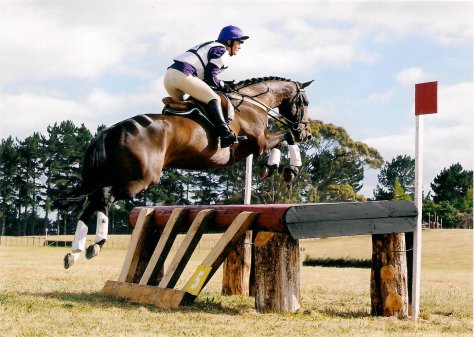
Her income from scanning enables her to work at her other love, breeding and training three-day eventing horses. “When people have horse training as their only business, they rely on selling good horses every year. For me, there’s no pressure to sell good horses and I can run a large string of horses here – it’s too expensive in the UK.”
“All us girls had ponies growing up; I liked the challenge of training the horses for the three different eventing phases – dressage, show jumping and cross country. When we were young our parents gave us £1,000 pounds to buy a horse. I bought two ponies, trained one and sold it to my sister for £1,000 pounds and it accumulated from there. I had about 15 when I left the UK and have about 18 now.” Sophie has lost count of the number of horses she has trained.
 She describes herself as a very competitive rider. “This year I’ve lost a few of my top horses, but I’ve started a partnership with a well-established breeder. She breeds them, I train and compete with them, and we sell them.”
She describes herself as a very competitive rider. “This year I’ve lost a few of my top horses, but I’ve started a partnership with a well-established breeder. She breeds them, I train and compete with them, and we sell them.”
“I get more upset if my training is at fault than my riding. I get more out of knowing that the horse has tried 100 percent for me and done what I asked, than if I won but they didn’t.” Sophie has won and competes in two-star events; the top level in New Zealand is three star. Each level up has higher jumps and is more technically difficult.
“I get people to video me competing so I can go back and watch what I’ve done; you can’t have a trainer there all the time. New Zealand is very high in the world rankings; we always have someone in the top placings. For such a small country we do extremely well; New Zealanders seem to be more gutsy.”
Sophie thinks the temperate climate makes a difference – in the UK people learn to ride at indoor schools, whereas pony clubs are common in rural areas here.
But eventing is very tough on horses, she says. “They get joint or tendon problems. The cross country is a lot of galloping; they don’t last very long.”
“You break horses in between age three and four, and never stop training them. It takes a couple of years to train a horse to do competent dressage from scratch. Each horse would train for six days a week, anything from 20 to 90 minutes riding a day. I’m riding all day long. Even at the highest level you’re always trying for a better trot or canter or half pass (above, where the horse moves sideways and forwards).” Sophie sells trained horses for $20,000 to $100,000.
Sophie married her male best friend at 24; they split amicably four years later. “I didn’t realise I was gay until after we split up. I met and was attracted to a gay woman at the local pony club where I was teaching.”
“It was a massive difference – I felt all the things my friends had said about their partners that I’d never felt before.” She describes herself as gay; “lesbian seems quite harsh to me”.
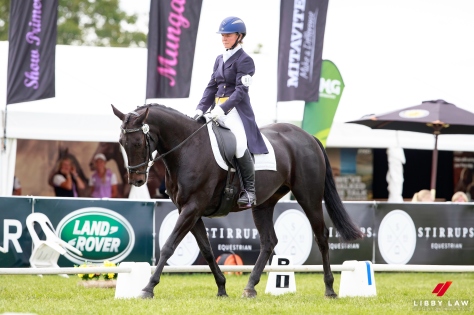 That relationship ended after three years and Sophie was single until 2013 when she met her partner Mel. She’s never been interested in having children.
That relationship ended after three years and Sophie was single until 2013 when she met her partner Mel. She’s never been interested in having children.
Sophie is out to all the farmers she works with who are “my age or younger – they’re very accepting. I’m a little cautious with older farmers, especially religious ones.”
Mel, who Sophie describes as “not horsey”, looks after the horses when Sophie is away scanning. “Other trainers give them a holiday but not as long as I do.”
The eventing competition season starts in October, “and it takes six weeks to get a horse fit,” says Sophie. “There are a huge number of lesbians and gay men in eventing. I don’t know why that is for women, but gay men get on well with the horses. Horses don’t accept toughness very well; there are lots of women trainers.”
Jenny R
Being the Daughters of Ally
 Georgina, left, and Jessie Matthews are two Nga Puhi/Pākehā sisters who whakapapa to Whangarei but were born and raised in Tauranga Moana by their dad Ally and their mum Janice. They started singing together in the family band when Georgina was seven. An enthusiastic crowd of Aucklander women enjoyed their powerhouse vocals when they performed at a lesbian-run concert and dance on June 24, but this will be their last performance together for some time.
Georgina, left, and Jessie Matthews are two Nga Puhi/Pākehā sisters who whakapapa to Whangarei but were born and raised in Tauranga Moana by their dad Ally and their mum Janice. They started singing together in the family band when Georgina was seven. An enthusiastic crowd of Aucklander women enjoyed their powerhouse vocals when they performed at a lesbian-run concert and dance on June 24, but this will be their last performance together for some time.
“We’ve been going full blast for three years”, says Jessie. “We’re pretty booked out eight or nine months in advance, which is good for a two-person covers band.” Jessie is nine years older than Georgina, with a brother in between; Jessie lives in Hamilton and Georgina in Auckland. Daughters of Ally took a break from mid-March, when Jessie was 36 weeks pregnant.
Her first baby Ally is two months old, and Georgina is training to qualify for the new skateboarding event at the 2020 Tokyo Olympics. They both have day jobs and singing gigs have filled their weekends.
Georgina’s course in audio engineering finished at the end of June, while Jessie is on maternity leave from her teaching job at Hamilton East Primary School. From September to January, Auckland-based singer Lana MacFarland will join Jessie in Daughters of Ally while Georgina has a break and starts a new job. Jessie and Lana met in 2016 when Jessie performed as Effie and Lana as Deena in Dreamgirls in Auckland.
Skateboarding
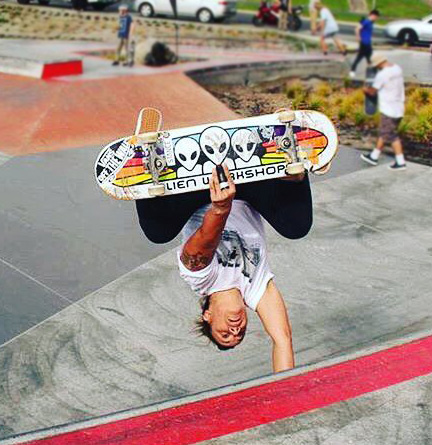 Outside the New Zealand skateboarding scene, Georgina’s achievements are little known. “I started skating when I was 13, after my brother started. I skated with two boys down the street, I was a tomboy down the park every weekend – the boys pushed me a lot more than if I’d been by myself.” In local competitions she was often the only girl; “there were no girls’ divisions and I would always come in the top three.”
Outside the New Zealand skateboarding scene, Georgina’s achievements are little known. “I started skating when I was 13, after my brother started. I skated with two boys down the street, I was a tomboy down the park every weekend – the boys pushed me a lot more than if I’d been by myself.” In local competitions she was often the only girl; “there were no girls’ divisions and I would always come in the top three.”
She won the 2000 NZ nationals, and that was when her parents realised how good she was. They took her to Sydney for an All Girls Skate Jam, where she came second. She went professional at 16 and gained international sponsorship from Gallaz shoes, which distributed US skateboard products. That gave her boards and a package of skateboard products every month.
“I went on tours with their team, and to the Globe world cup every year. One of my best years was 2004, when I skated against my main influence, Elissa Steamer – I came fourth. I’m friends with most of the top women skaters, like Vanessa Torres from US.”
“One of my biggest inspirations was Stacey Roper from Taranaki, who was a bit older than me. She’d push all the girls to skate together, we’d skate together every weekend in Auckland. Dad used to sit in the car watching me skate on the weekend for five hours. He didn’t know what the moves are called but he would come over and tell me my foot should be further back when I did that trick.”
Georgina lived in London for a year in 2011 and came first in the UK. Her skateboarding career took her to China on a two-week tour. “I’ve been so lucky to see the world skating. When I was 18 I became a rep and was a brand manager for Gallaz, and later worked as a territory manager for Globe’s skate brands in Melbourne. I was the sales rep for Van shoes for the South Island – a lot of things have come out of picking up my brother’s skateboard when I was 13.”
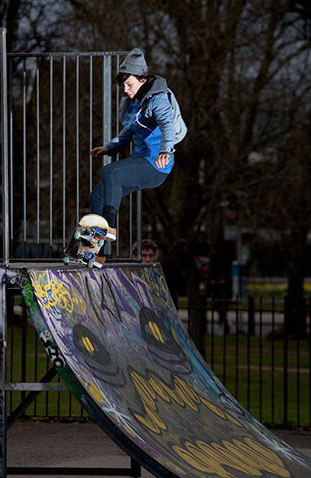 To qualify for the 2020 Olympics, she’s skating at least three times a week, learning new tricks and still receiving sponsored for shoes and boards. “I always say hello and chat with girls at skate parks and help them if they’re interested. It’s definitely male dominated, but there’s so many girls out skating or trying it now. Competitions now have a division for women.” She says the female “skateboarding community is predominantly gay”.
To qualify for the 2020 Olympics, she’s skating at least three times a week, learning new tricks and still receiving sponsored for shoes and boards. “I always say hello and chat with girls at skate parks and help them if they’re interested. It’s definitely male dominated, but there’s so many girls out skating or trying it now. Competitions now have a division for women.” She says the female “skateboarding community is predominantly gay”.
“Female skaters from Browns Bay on Auckland’s north shore have set up the Sisters of Shred Facebook page; “I always point girls I see skating to that page. They’ll post where they’re going this weekend, and invite others along. A couple of girls are also running skate schools for girls.”
Skating on concrete is hard on the body. “I’ve had a knee reconstruction and I have a broken knuckle. I haven’t broken any bones, but had bumps and bruises on my shins, chipped my teeth, smacked my head, rolled my ankles lots of times, got lots of scratches and bruises.”
“You just have to get back up and try it again. When you’re 17 you bounce off concrete, things don’t seem to hurt as much. I’m still happy with the level I’m at, I haven’t got to my peak yet.”
New Zealand skaters haven’t heard about the qualifying framework for the Olympics. “The Australians have already had an Australian Olympic camp, but haven’t heard anything here. We need to start thinking about it because we have great skaters in New Zealand.”
Family band
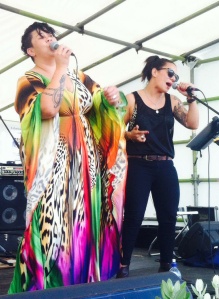 The sisters’ dad is a musician and retired wharfie who was friends with several of the famous touring Blerta music and theatre crew in the 70s, and “brought us up singing and playing instruments since we were kids, like the Jackson Five,” says Jessie. “We did gigs – I’ve been doing it since I was 13 and Georgina started when she was six.” Georgina adds: “Dad was in a band called Sons and Lovers, and a few others. He had an afro – photos of him when he was young look so cool, he had so much style.”
The sisters’ dad is a musician and retired wharfie who was friends with several of the famous touring Blerta music and theatre crew in the 70s, and “brought us up singing and playing instruments since we were kids, like the Jackson Five,” says Jessie. “We did gigs – I’ve been doing it since I was 13 and Georgina started when she was six.” Georgina adds: “Dad was in a band called Sons and Lovers, and a few others. He had an afro – photos of him when he was young look so cool, he had so much style.”
When Georgina was young “my dad would always put me on the drums, so I’d drum, sing a few songs and go home to bed. My family is a big inspiration; my dad and sister taught me everything I know about singing. We’ve always been very close and it’s the best, having family members as band mates.”
Both sisters are multi-instrumentalists as well as singers. Jessie was in the first season of X Factor and reached the grand final of Stars in our eyes, and has “been round the world performing as Aretha Franklin. We could live off performing, but we enjoy our day jobs.”
 “Most weekends we perform in towns around the North Island,” she says. “Our repertoire is very broad, we can cater for 18 to 80, from the 1940s to the current top 40. We can change the music at weddings when the grandparents go to bed – we judge the crowd.” Ally, now 65, “plays with us quite often. He just loves it.”
“Most weekends we perform in towns around the North Island,” she says. “Our repertoire is very broad, we can cater for 18 to 80, from the 1940s to the current top 40. We can change the music at weddings when the grandparents go to bed – we judge the crowd.” Ally, now 65, “plays with us quite often. He just loves it.”
Jessie describes the sisters as “quite shy off the stage. Georgina’s an absolute live wire on stage, we’re not your average Kiwi Māori singers, we’re powerhouse vocals with no trills and frills. We don’t rehearse, we never have – we practice a lot on our own.”
“I’ll call George and say ‘I‘ve just learnt that new Ed Sheeran song and you’ll have to listen to it and see what backing you want to do’. Since we live in different town, I’ve got to learn it well enough to hold it on my own. We’re equally lead voices which mesh really well, our harmonies are very polished but our solo voices are quite different.”
Georgina says it’s a “different feeling singing alongside your sister, an extra bit of specialness. We’re so in tune with each other, it’s such a breeze singing with Jessie. We’re best mates doing what we love, sharing with each other and experiencing different things together.”
The two have also written and performed on their own. Jessie works “with a producer in the UK and released house/techno music under Ministry of Sound. We write different original stuff. George is singer-songwriter, like Anika Moa, but mine’s a bit more soul, with more backing.”
Their first single Poppa, released in 2015, is reggae, “but that’s not how I would describe us,” says Jessie. “We’re quite diverse in what we sing. We like pop, soul and rap.” Georgina says her audio engineering course “helped me learn about the recording side”. She has “a handful of originals – eventually I want to write and record songs.”
The pair “love the Topp Twins – we’re also lesbians, we’re sisters, we’re two Māori girls quite different but quite like the Topps,” says Jessie. “We’re very close, George and I, like they are.”
Coming out
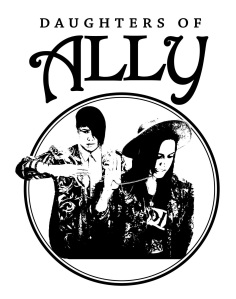 Both sisters identify as lesbian and Georgina also describes herself as gay. Jessie, who came out first, says “I never felt like I couldn’t say anything or be who I was. It was nerve-wracking at the time, but my family were so supportive, all my extended family as well. They’re proud of who I am.”
Both sisters identify as lesbian and Georgina also describes herself as gay. Jessie, who came out first, says “I never felt like I couldn’t say anything or be who I was. It was nerve-wracking at the time, but my family were so supportive, all my extended family as well. They’re proud of who I am.”
Georgina says when she was “just out of school I started having feelings for a girl; the first girl I was with I realised it was more than a fling. I came out at 18. My mum thought it was a phase at first, but they’ve been very supportive. Mum and Dad had already been told once, so I was the cherry on the top.”
Jessie has been with her partner Sue for nine years “and we’ve been married four years in October. We had planned to get married regardless and then the marriage equality law got passed. We were one of the first 100 to get married. My wife is from South Africa, from quite a conservative Christian family.”
“Sue and I are the legal parents on Ally’s birth certificate; there’s space for the donor’s name, and for whakapapa – he’s part-Māori like me, and it was really neat. We wouldn’t be able to do that in lots of countries in the world.” The sisters’ parents recently moved to Hamilton to be near “us and the baby”.
Jessie and Georgina are two to watch; see Dyke Diary for other Daughters of Ally gigs and watch this space for news of Georgina’s skateboarding.
Jenny Rankine
Top photo by Salina Galvan; handplant skateboard photo by Cullan Jack.
The challenges of solo farming
LNA’s print predecessor, the Tāmaki Makaurau Lesbian Newsletter, first profiled South Otago sheep farmer Megan Barclay four years ago. She has been running her Scots grandparents’ 234ha sheep farm on Ngai Tahu land at Clydevale, near the Clutha River, for 13 years, with the help of four sheep dogs, a quad bike and a tractor. However, since 2013 she’s faced injury and the work of protecting the farm creeks.
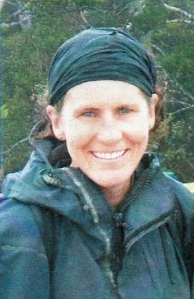 “In March 2016, I was putting the rams through a footbath and a big one, about 100kg, pushed me over and I tore a ligament and the meniscus cartilage on my right knee,” says Megan, who weighs under 60kg. “I finished the job then iced the knee and looked for work I could do with my knee in the air. So that afternoon I sowed out grass on the tractor.” Luckily, autumn and winter are her quiet time, averaging ten hours a day feeding out and doing maintenance.
“In March 2016, I was putting the rams through a footbath and a big one, about 100kg, pushed me over and I tore a ligament and the meniscus cartilage on my right knee,” says Megan, who weighs under 60kg. “I finished the job then iced the knee and looked for work I could do with my knee in the air. So that afternoon I sowed out grass on the tractor.” Luckily, autumn and winter are her quiet time, averaging ten hours a day feeding out and doing maintenance.
Megan was in pain and using walking sticks for five months before her knee came right. “I couldn’t sit still for longer than 10 minutes or it would seize and lock. Every morning I drove to a heated pool 30 minutes away, which warmed it and enabled me to function. It took until August before it stopped hurting; I started walking on soft ground with tramping poles. I couldn’t run, which I loved, and I couldn’t cycle, so thank god for swimming.”
“It was a month before I could see a specialist in Dunedin and another month before I got the result of the MRI.” She was told she’d need surgery, but that no operation spaces would be available until January this year. However, “four months after the injury I got to see a surgeon who decided it would heal itself.” Megan is now back doing the recreational trail running she loves.
“There were only a few farm jobs I couldn’t do. My father helped with drenching the ewe lambs and I sold off the last of the works lambs. I took everything really slowly and because I couldn’t sit still, I kept on going,” she says. “At this time of the year the rams were out with the girls and every ten days I’d change the permanent colour crayon on the rams’ chest harnesses.”
The colours transferred to the ewes, so Megan could tell which ewes has been mated on the first ten days of April and would therefore lamb early in September. “If a storm came through, I concentrated on the ewes who are lambing. In winter I bandaged the knee and strapped it with a brace and hobbled along marking out small blocks with electric fences. I did get someone to help out at lambing in September,” her busiest time, “but my knee was fine by then.”
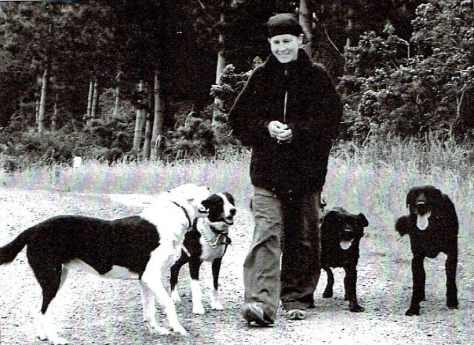 “Luckily it was a mild winter, but I was worn out, tired and frazzled, waking up with pain in the middle of the night. It was emotionally hard. When you’re on your own, you haven’t got anyone to ask how you’re feeling or cook your meals. You’ve just gotta get on with it.”
“Luckily it was a mild winter, but I was worn out, tired and frazzled, waking up with pain in the middle of the night. It was emotionally hard. When you’re on your own, you haven’t got anyone to ask how you’re feeling or cook your meals. You’ve just gotta get on with it.”
Megan normally works long hours, seven days a week. She has 1,800 Texel Coopworth ewes, 500 hoggets, 40 calves and 18 rams. Like all farmers, her tasks are dictated by the seasons, and she has few breaks away from the farm. [The photo at the bottom is of her and her mum on a cycling holiday in France, during one rare holiday.]
“In July the ewes get an ultrasound in the yard and I find out which ones are pregnant with more than one.” Lambing in September is busy, with tailing and tractor work to sow grass into the winter crop paddocks. In early December, she drenches and weans the lambs, and sends the first crop of male lambs to the works at Balclutha.
Unlike her childhood, when wool provided most of the income, now meat production earns 90 percent, making farming more intensive. At Christmas and New Year she dags the sheep and prepares the lambs for shearing. Then it’s crutching, “shaving their bottoms with a handpiece so they don’t get flystrike, more drenching, and mowing seed heads off the grass”.
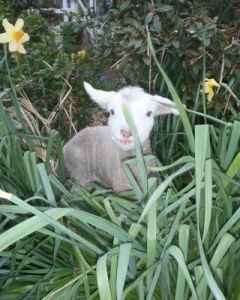 The other big change has been preserving the four creeks on the farm, which wander through two-thirds of the paddocks. “When my grandfather bought the farm, the only water source were the creeks in the paddocks. When I took over the farm from my dad 13 years ago, a third of the area had water troughs.” Megan paid $20,000 to get water to troughs in every paddock.
The other big change has been preserving the four creeks on the farm, which wander through two-thirds of the paddocks. “When my grandfather bought the farm, the only water source were the creeks in the paddocks. When I took over the farm from my dad 13 years ago, a third of the area had water troughs.” Megan paid $20,000 to get water to troughs in every paddock.
“As farmers we love our land. You see a fence and you think my grandad did that. There were only eight paddocks on the whole farm when they brought it and now there are over 30. Each new addition, whether a fence or a shelter belt, gives you such pride.”
Megan’s biggest ongoing job is protecting the creeks on the farm with culverts and fences to meet the Otago Regional Council’s plan for swimmable water sources by 2020. “We all want swimmable creeks and rivers, but that has huge financial implications for farmers.”
“When stock or vehicles go through creeks, there’s not allowed to have any sediment go into the creek. The cost of keeping cattle out is huge. Last year I bought five culverts for $15,000, but couldn’t afford to put them in. This year wool prices dropped by half, because lots of people are buying synthetic carpets. It cost $10,000 to install all the culverts.”
The next plan is to build fences along the creeks. “We’d love to have them fenced with riparian planting, but I have to do it out of a shrinking income. If it’s too hard, then conglomerates end up buying farms and it becomes less a family-owned industry and more industrial farming, which doesn’t look out for local interests. There are changing times ahead for the farming sector.”
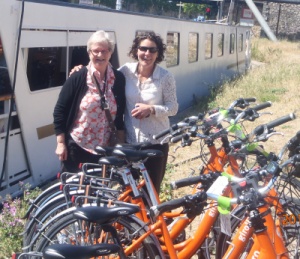 Megan believes that the levels of sediment and E coli in the water set by the government and councils “are not necessarily that achievable. For example, one farmer near us has a natural bush area above a creek, but has measured high E coli levels in that water, possibly from a dead bird or possum. The E coli levels dropped in one creek I fenced off, but then increased again, maybe because of the ducks in it.”
Megan believes that the levels of sediment and E coli in the water set by the government and councils “are not necessarily that achievable. For example, one farmer near us has a natural bush area above a creek, but has measured high E coli levels in that water, possibly from a dead bird or possum. The E coli levels dropped in one creek I fenced off, but then increased again, maybe because of the ducks in it.”
Megan has leased 30ha to a cropping farmer “but will take that back next year and increase my stock numbers. I raised 40 bobby calves last year, but haven’t figured out whether I’ll increase the numbers of cattle or sheep. It’s silty land, not appropriate for too many heavy cattle, but cattle are less work than sheep. Then again, cattle are really expensive at the moment; I have to do the figures.”
Megan is still single; “I don’t get out much and don’t see many lesbians. I’m happy being me here, other people treat you as you are. The farrier who came to do my horse’s shoes was yarning away – his wife was apparently being a bit stroppy and he said ‘You’ll have the same problems with women as I do’. I knew nothing about his life but he knew about me and was okay with it all.”
Injuring her knee “makes you think about what else you could do, but I was in so much pain there was no way I could have done a desk job, I couldn’t sit still. It’s the kind of fall that could happen in a supermarket. I haven’t any other plans for the future. I love working outdoors with animals.”
Jenny Rankine
Te ao pāpāho, media
NZ Film Festival 2017
Expanding a ‘sexy book club’
We appreciate the original cartoons provided by Helen Courtney. This one, Flight of fancy, seems to fit particularly well with Media.

NZ Film Festival 2017
At time of writing, only the Auckland programme was fully available (tickets on sale)*, so that is where the links will go. This is generally the largest, so not all films noted here will necessarily be available in all regions. Check out your closest (of 13) locations, and don’t leave it too late to book.
*The Wellington programme is also launched, with print programmes in distribution and tickets on sale July 6.
On the other hand, don’t be too worried if you miss out here, many of the films premiere in the festival and return over the following months to more general screenings.
Go to www.nziff.co.nz/2017 first, then review the programme once you have chosen the region.
What might be of interest to lesbians in the 2017 programme? We are looking for films about, or by, lesbians; happy – or at least positive – endings are a bonus. Interesting films about women. Perhaps some about others in the rainbow community. Kudos for locally made films being identified as ‘Aotearoa’ this year.
There look to be lots of interesting films, but sadly, very little lesbian or rainbow features.

A Date for Mad Mary, Ireland, 2016, looks like it will have a story of ‘possibility’ – same-sex attraction develops in spite of heterosexual assumptions and behaviour. Reviews suggest it may be a bit clichéd, but that it does take coming out as straightforward, rather than an unusual storyline.
100 Men is an Aotearoa film which “reflects on 40 years of gay history via a countdown of Kiwi filmmaker Paul Oremland’s most memorable shags, featuring candid and moving interviews with past lovers”. While you might wonder how much this relates to women’s experiences over the last 40 years, there are certainly some comparisons to make: “in the days before gay marriage seemed even remotely possible, the rejection of monogamy was a defining feature of gay culture … he also shows that his encounters led to long-lasting friendships”.
Other positive women-focussed films, in alphabetical order, include
- Ancien and the Magic Tablet, Japan, animated, “steampunk dreams intersect with corporate reality set just days before the 2020 Tokyo Olympics”.

- I Am Not a Witch, Zambia, “Zambian-born writer and director Rungano Nyoni’s surreal tale, revolves around a nine-year-old village girl accused of witchcraft and hauled off to do witch’s work … though accusing someone of witchcraft is illegal in Zambia, Nyoni’s tale is based on continuing practices she observed herself, living for a month in a witch’s camp”.
- It is the 1927 US film that ensured star Clara Bow would be called The ‘It’ Girl; it screens just once, with APO playing the original score live.
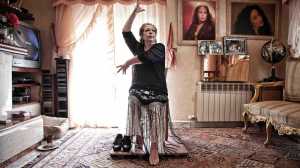
- La Chana, Spain, gives us a flamenco dance legend, “an intimate portrait, a loving tribute to the legendary gypsy dancer, an admiring portrait of a strong-willed female performer rising above the restrictions of the patriarchal society into which she was born”.
- Manifesto, Germany (in English), features Cate Blanchett as each of 13 characters giving voice to the published rallying calls of myriad artistic movements, “a dazzling feat of chameleon artistry”.

- Marlina the Murderer in Four Acts, Indonesia, is a “thoroughly enjoyable and delightfully deadpan adventure which delivers a wily feminist spin on a western tale of murder and revenge”.
- Maudie, Canada, a biopic of Nova Scotian folk artist Maud Lewis, “irrepressible despite arthritis and a churlish husband”.
- The Midwife, France, stars two distinguished stars of French cinema, Catherine Deneuve and Catherine Frot, in a “touching tale of the unlikely connection of opposites, a conscientious midwife reluctantly reconnecting with the flamboyant step-mother who absconded 30 years earlier”.
- My Year with Helen, Aotearoa, will surely be widely screened following the festival: Director/producer Gaylene Preston provides a “fascinating portrait of Helen Clark on a mission, campaigning for the position of Secretary General of the United Nations”. Gaylene Preston will be in attendance for a Q+A following both Auckland screenings.

- Sami Blood, Sweden, “In 1930s Sweden, 14-year-old Sami girl Elle Marja is forcibly removed from her family and sent to a state-run boarding school where she is expected to learn how to behave in ‘acceptable’ society; she becomes determined to find a new life for herself by abandoning her indigenous heritage and attempting to pass as Swedish ”.
- Starless Dreams, Iran, is a documentary about young women who are “locked up in a Tehran detention facility for murder, theft or simply running away from home – and whose lives were often worse outside”.

- Waru, Aotearoa, “Eight Māori female directors – Briar Grace-Smith, Casey Kaa, Ainsley Gardiner, Katie Wolfe, Chelsea Cohen, Renae Maihi, Paula Jones, Awanui Simich-Pene – have each contributed a sequence to this powerful and challenging feature which unfolds around the tangi of a small boy who died at the hands of his caregiver”. The directors will be at a Q+A following both Auckland screenings.
Alison
Expanding a ‘sexy book club’
Hugo Grrrl, the drag king MC of Naked Girls Reading (NGR), is keen to spread the show from its current regular Wellington and Christchurch performances, and “create chapters all over New Zealand”.
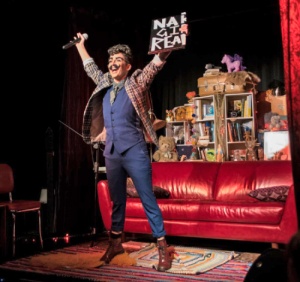 NGR started in Chicago eight years ago and has spread to the USA, the UK and Australia. Wellington-based Hugo Grrrl (left, AKA Genevieve Fowler) heard about it from a mate. “It’s absurd, funny, ground-breaking – the collision of cabaret, literature and comedy. I thought it was genius.”
NGR started in Chicago eight years ago and has spread to the USA, the UK and Australia. Wellington-based Hugo Grrrl (left, AKA Genevieve Fowler) heard about it from a mate. “It’s absurd, funny, ground-breaking – the collision of cabaret, literature and comedy. I thought it was genius.”
So she set up a New Zealand franchise, starting with two-monthly shows at the Fringe Bar in Wellington and the Exchange in Christchurch.
The two-hour shows each feature three women, naked but for shoes, who read and discuss texts they love on the theme of the evening. Themes have included Pride, religion, feminist propaganda, Kiwiana, fantasy, crime and punishment, science fiction and smut.
“I haven’t seen a Pride edition overseas – most of our themes haven’t been done elsewhere,” says Hugo. “The topics have so much content, we could do each theme four times over.”
It’s important that the women choose writing they’re passionate about, says Hugo. “I ensure there’s lots of variety and no triggering material. They bring the most amazing stuff – they always have twice as much to read as they need, but the reading is only part of the show. They’ll do a poem, then we’ll have a conversation in the group about it – it’s often hilarious.”
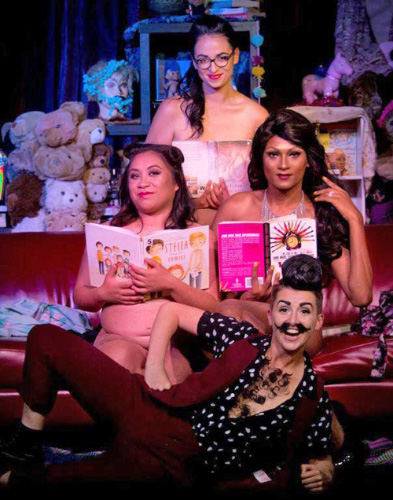 Hugo doesn’t run auditions for the show; “people just get in contact. There’s overwhelming interest – I can cast only half of those who are interested. Personality is how I cast, interesting women who make me laugh. It’s not how they look, or whether they have experience taking their clothes off in public.”
Hugo doesn’t run auditions for the show; “people just get in contact. There’s overwhelming interest – I can cast only half of those who are interested. Personality is how I cast, interesting women who make me laugh. It’s not how they look, or whether they have experience taking their clothes off in public.”
“We joke that NGR is a lesbian dating service – we get great queer repeat audiences. We get a smattering of single men who turn up alone and sneak out at half time. We call that ‘booby trapped’ – they would have come for the boobs and they have to listen to the readings. We get a lot of women coming to see bodies that look like theirs, to celebrate the female form in all its honesty.”
A Drag King MC is unique to the New Zealand chapter; Hugo describes himself as a “friendly neighbourhood transvestite, a hairy little teenage boy.”
“I think a drag king MC strikes a really good balance; it allows the women to occupy the female energy solely, and it’s not a fully-clothed cis gender man,” says Hugo. “The show calls attention to the oversexualisation of the female body; we talk about gender norms and binaries.”
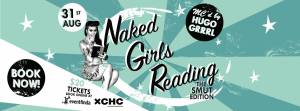 “Uusally we see naked women in a patriarchal context. But NGR is about humanising the female body – women in their natural state being smart, vivacious and funny.”
“Uusally we see naked women in a patriarchal context. But NGR is about humanising the female body – women in their natural state being smart, vivacious and funny.”
Shows have included cabaret artists, “but we only have one burlesque performer on stage at any one performance”. Hugo says performers have included pregnant women, mothers, comedians, women with “an amazing array of stories and life experiences”.
One reviewer wrote that it was hard to describe the sense of “intimacy and almost sacredness” from “raw, intense pieces of writing … being read by someone with no clothes on”. Another described NGR as “sexy book club, a sapphic slumber party”.
Hugo wants to make NGR better and “more inspiring – it makes people really happy. It gives women confidence and comfort seeing their bodies and stories on stage.” Hugo has his eyes on Palmerston North, Auckland and Dunedin, so see the Naked Girls Reading Facebook page or Dyke Diary for details. Jenny R
He huatau, opinion
Translesbians in lesbian-feminist spaces
Nadia Gush, pictured with cartoons by Helen Courtney, was contracted to work as Director of the Charlotte Museum Trust in 2015, and is one of many discussing the significance of their own historical practice in the edited collection History making a difference: New approaches from Aotearoa, recently published by Cambridge Scholars Publishing.
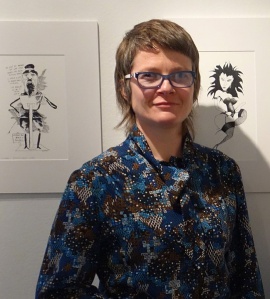 A little more than a fortnight into my former job as director of the Auckland-based Charlotte Museum Trust, I was confronted with the political conundrum of translesbian presence in lesbian feminist spaces. Surrounded by iconic lesbian heritage ranging from a collection of 1970s t-shirts adorned with political slogans, to replica goddess figurines from antiquity, a person came through the Museum doors for whom 1970s lesbian t-shirts were, at best, an uncomfortable fit. This visitor to the Museum was welcomed by Miriam Saphira with customary enthusiasm. Seemingly genuinely interested in the displays, they diligently absorbed the information on lesbian history provided by the Museum’s lower rooms. They were polite and friendly. They were also silent from the moment they entered the Museum to the moment they left. As they signed their name in the visitor’s book, I was struck by how inherently unwelcoming the Charlotte Museum must seem to translesbians. No amount of welcoming smiles from front of house staff and volunteers could make up for the exclusivity of identity politics on display in the Museum; this was not her history, but it was being written in her name.
A little more than a fortnight into my former job as director of the Auckland-based Charlotte Museum Trust, I was confronted with the political conundrum of translesbian presence in lesbian feminist spaces. Surrounded by iconic lesbian heritage ranging from a collection of 1970s t-shirts adorned with political slogans, to replica goddess figurines from antiquity, a person came through the Museum doors for whom 1970s lesbian t-shirts were, at best, an uncomfortable fit. This visitor to the Museum was welcomed by Miriam Saphira with customary enthusiasm. Seemingly genuinely interested in the displays, they diligently absorbed the information on lesbian history provided by the Museum’s lower rooms. They were polite and friendly. They were also silent from the moment they entered the Museum to the moment they left. As they signed their name in the visitor’s book, I was struck by how inherently unwelcoming the Charlotte Museum must seem to translesbians. No amount of welcoming smiles from front of house staff and volunteers could make up for the exclusivity of identity politics on display in the Museum; this was not her history, but it was being written in her name.
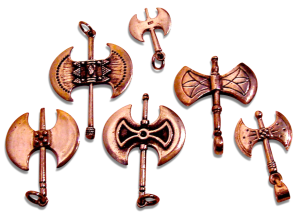 I do not know whether the person who came into the Museum identified specifically as ‘translesbian’ – a term signalling both transgender and lesbian identities – all I knew was that they had made the effort to visit the Museum, and that they were positioned as an outsider by the stories held and preserved within that Museum. What I am also only able to speculate on, is whether or not they felt like the Museum had offered them what they were looking for. Many women who visit the Charlotte Museum experience a sense of validation and community, appreciating an opportunity to look into the past and see people who were ‘just like them’. Did my potentially translesbian visitor feel validated? Did they feel like they were looking at people ‘just like them’? I found the possibility that someone who identified as lesbian might feel ostracised within a museum dedicated to lesbian heritage and culture to be deeply troubling.
I do not know whether the person who came into the Museum identified specifically as ‘translesbian’ – a term signalling both transgender and lesbian identities – all I knew was that they had made the effort to visit the Museum, and that they were positioned as an outsider by the stories held and preserved within that Museum. What I am also only able to speculate on, is whether or not they felt like the Museum had offered them what they were looking for. Many women who visit the Charlotte Museum experience a sense of validation and community, appreciating an opportunity to look into the past and see people who were ‘just like them’. Did my potentially translesbian visitor feel validated? Did they feel like they were looking at people ‘just like them’? I found the possibility that someone who identified as lesbian might feel ostracised within a museum dedicated to lesbian heritage and culture to be deeply troubling.
The tension between translesbian presence and lesbian feminist politics is much larger than the very human question of whether or not visitors to a museum feel represented in displays and exhibitions. ‘Woman’, as a political category, has consolidated around the notion of a body capable of giving birth. ‘Lesbian’ has in many instances followed suit, particularly in the context of lesbian feminism. An example of this is apparent in the May-June 1982 issue of the New Zealand newsletter Lesbian Lip. This particular issue of the lesbian-only newsletter demonstrates how lesbian feminists could be motivated to lay claim to a particular gendered archetype that prioritised the birthing body.
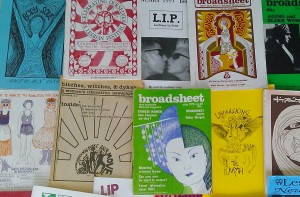 Under the heading ‘Are you a lesbian or a woman?’ the newsletter’s feminist authors contemplated the relationship between ‘women’s liberation’, and ‘lesbian liberation’, arguing in turn for a new definition of ‘woman’ itself. Under the heading ‘lesbian and queers’, one author argued that ‘woman’ exclusively meant white, middle-class, and heterosexual. In turn lesbians could not be women. Lesbians may have been unnatural aberrations, they may have been Godless sinners, but they did not fall within the contemporary definition of what a woman might be. It was in response to this that lesbian feminists began to imagine a utopia where ‘woman’ could mean non-heterosexual, and could exist outside of patriarchy.
Under the heading ‘Are you a lesbian or a woman?’ the newsletter’s feminist authors contemplated the relationship between ‘women’s liberation’, and ‘lesbian liberation’, arguing in turn for a new definition of ‘woman’ itself. Under the heading ‘lesbian and queers’, one author argued that ‘woman’ exclusively meant white, middle-class, and heterosexual. In turn lesbians could not be women. Lesbians may have been unnatural aberrations, they may have been Godless sinners, but they did not fall within the contemporary definition of what a woman might be. It was in response to this that lesbian feminists began to imagine a utopia where ‘woman’ could mean non-heterosexual, and could exist outside of patriarchy.
For many it was ‘the goddess’ that became a symbol of this utopian state of being. Marija Gimbutas was instrumental in this movement, revolutionary in claiming that the preponderance of female Neolithic figurines found in various archaeological sites demonstrated that there was a pre-patriarchal community in human history. She believed that this community centred on the Mother-Goddess, and because of this, it was men who were positioned as second-class citizens rather than women. Gimbutas was influential amongst spiritual feminists of the 1980s and 1990s who chose to identify with this mythic pre-patriarchal way of life. The drawing accompanying the articles on (not) being a woman in Lesbian Lip evoked this pre-patriarchal ideal. It did so in that it depicted a Minoan snake goddess. In Gimbutas’ pre-patriarchal community, lesbian feminists saw the possibilities of their own utopia. Of course, what made Gimbutas’ Neolithic figurines identifiable as female was that they all had vulvac shapes inscribed upon what presented as their lower torsos. Many such figurines are assumed to be fertility idols.
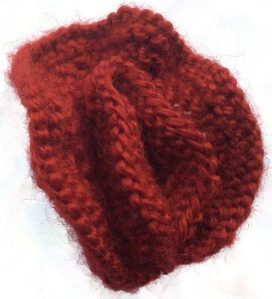 When my presumed translesbian visitor came into the Charlotte Museum, she was confronted with this version of lesbian feminism, whereby the vulva is the icon of lesbian identity. It was plainly referenced in the Museum’s art and heritage collections. Was this her body? Did she feel as if her corporeal existence was encompassed within the cabinet showcasing replica goddess figurines? Did she care?
When my presumed translesbian visitor came into the Charlotte Museum, she was confronted with this version of lesbian feminism, whereby the vulva is the icon of lesbian identity. It was plainly referenced in the Museum’s art and heritage collections. Was this her body? Did she feel as if her corporeal existence was encompassed within the cabinet showcasing replica goddess figurines? Did she care?
The issue at the heart of the political conundrum that is translesbian presence in lesbian feminist spaces is that the core of lesbian feminism is troubled by the vulva-less body. We might politely suggest that what is in someone else’s pants is no business but their own, and we might hold trans-friendly events with fervour, but lesbian feminism has not trodden the path of politeness. By utilising the vulva as an icon of strength and sisterhood, ‘lesbian’, as a category of identity, has been forged in ways inherently antagonistic to translesbians. No amount of ‘and you can come too’ is going to provide translesbians with the authenticity that lesbian feminism has given to the body capable of bleeding and birthing through a vagina. In turn, an aspiration to truly embrace the full diversity of lesbian experience is necessarily ontologically earth shattering.
Rātaka takatāpui, Dyke Diary
Auckland/Tamaki Makaurau
Waikato/Central North Island
Wellington/Te Whanganui-a-Tara
Nelson area/Whakatū
Christchurch/Ōtautahi
Otago/Southland/Te taurapa o te waka
Overseas/Rāwāhi
Auckland/Tamaki Makaurau
Thursdays The Muse duo of Francis Christoffel and Val Cole play at the Ponsonby Cruising Club, 6.30–8pm throughout winter. But this depends on the weather, so phone the club first to confirm, 376 0245.
 Saturday 1 EquAsian Coffee Group 4pm, Verona Bar & Cafe, 169 Karangahape Rd, central Auckland. Enjoy a cuppa and meet new people, have chilled out conversations with fellow Asians; friends and family invited. We will be sitting at the back in Verona Cafe. If you have any problem finding us feel free to contact us through the Facebook event page.
Saturday 1 EquAsian Coffee Group 4pm, Verona Bar & Cafe, 169 Karangahape Rd, central Auckland. Enjoy a cuppa and meet new people, have chilled out conversations with fellow Asians; friends and family invited. We will be sitting at the back in Verona Cafe. If you have any problem finding us feel free to contact us through the Facebook event page.
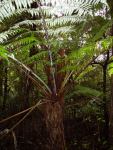 Sunday 2 Dyke Hike 11am. Mt Te Aroha. The views along the way and from the top are well worth the climb. About 4-4.5 hours. Grade: Hard (boots required, tracks may be rough and difficult, steep hills possible. A reasonable level of fitness will help you to enjoy these hikes. If you are not an experienced hiker, we require you to complete two moderate hikes before you join us in a hike graded hard). Email hike@lesbian.co.nz, visit www.lesbian.co.nz or the Facebook page.
Sunday 2 Dyke Hike 11am. Mt Te Aroha. The views along the way and from the top are well worth the climb. About 4-4.5 hours. Grade: Hard (boots required, tracks may be rough and difficult, steep hills possible. A reasonable level of fitness will help you to enjoy these hikes. If you are not an experienced hiker, we require you to complete two moderate hikes before you join us in a hike graded hard). Email hike@lesbian.co.nz, visit www.lesbian.co.nz or the Facebook page.
 Thursday 5 Rainbow Auckland AGM + guests Rainbow Communities Advisory Panel 4-8.30pm, The Oakroom, 17 Drake St, Victoria Park Market, Freemans Bay. Vote for new and renewed positions on the exec, meet and get to know more about some of our members and hear all the latest news in the business and Rainbow community. Visit Facebook event page for details.
Thursday 5 Rainbow Auckland AGM + guests Rainbow Communities Advisory Panel 4-8.30pm, The Oakroom, 17 Drake St, Victoria Park Market, Freemans Bay. Vote for new and renewed positions on the exec, meet and get to know more about some of our members and hear all the latest news in the business and Rainbow community. Visit Facebook event page for details.
Saturday 8 Auckland Pride community hui Have your say about Pride Festival and parade 2017 and hear the board’s plans. Email co-chairs Lexie Matheson and Julie Swift chair@aucklandpridefestival.org.nz to put an issue on the agenda, or raise it on the day. 10am-12noon, Studio One Toi Tū, 1 Ponsonby Rd. Visit Facebook event page for details.
 Saturday 8 Auckland Pride community hui with a focus on youth. Have your say about Pride Festival and parade 2017 and hear the board’s plans. Email co-chairs Lexie Matheson and Julie Swift chair@aucklandpridefestival.org.nz to put an issue on the agenda, or raise it on the day. 2-4pm, RainbowYOUTH Drop-in Centre, Abbey St entrance, Newton. Visit Facebook event page for details.
Saturday 8 Auckland Pride community hui with a focus on youth. Have your say about Pride Festival and parade 2017 and hear the board’s plans. Email co-chairs Lexie Matheson and Julie Swift chair@aucklandpridefestival.org.nz to put an issue on the agenda, or raise it on the day. 2-4pm, RainbowYOUTH Drop-in Centre, Abbey St entrance, Newton. Visit Facebook event page for details.
 Saturday 8 Lick ‘Party with a cause’ 10pm-3am, Neck of the Woods, 155B Karangahape Rd, central Auckland. Door entry: $10 before 11pm, $15 after; $5 from every ticket goes to Rainbow Youth. Visit the Facebook event page for details.
Saturday 8 Lick ‘Party with a cause’ 10pm-3am, Neck of the Woods, 155B Karangahape Rd, central Auckland. Door entry: $10 before 11pm, $15 after; $5 from every ticket goes to Rainbow Youth. Visit the Facebook event page for details.
 Wednesday 12 aLBa’s July meeting: pesticides, organics and travels 6-9pm, Dr Meriel Watts will speak on organics, pesticides and travels to Palestine. Garnet Station, 85 Garnet Rd, Westmere. Visit Facebook event for details.
Wednesday 12 aLBa’s July meeting: pesticides, organics and travels 6-9pm, Dr Meriel Watts will speak on organics, pesticides and travels to Palestine. Garnet Station, 85 Garnet Rd, Westmere. Visit Facebook event for details.
 Wednesday 12 Women, poverty and prejudice – Feminism and the 2017 election, with Carmel Sepuloni, Labour; Cinnamon Whitlock, Maori Party; Jan Logie, Green Party; Tracey Martin, NZ First; Tracey-Lee Repia, Mana Party; National Party, to be confirmed; chaired by Layla Lyndon-Tonga. All genders welcome. Light refreshments before and after speakers. 7-9pm, Western Springs Community Garden Hall, 956 Great North Rd, sliding scale $0-$20. Organised by the Auckland Women’s Centre, RSVP to info@womenz.org.nz; visit the Facebook event page for details.
Wednesday 12 Women, poverty and prejudice – Feminism and the 2017 election, with Carmel Sepuloni, Labour; Cinnamon Whitlock, Maori Party; Jan Logie, Green Party; Tracey Martin, NZ First; Tracey-Lee Repia, Mana Party; National Party, to be confirmed; chaired by Layla Lyndon-Tonga. All genders welcome. Light refreshments before and after speakers. 7-9pm, Western Springs Community Garden Hall, 956 Great North Rd, sliding scale $0-$20. Organised by the Auckland Women’s Centre, RSVP to info@womenz.org.nz; visit the Facebook event page for details.
Sunday 16 Coffee & Stroll 10am, meet for coffee at Crave, 6 Morningside Drive, Morningside; 10.30am, an easy stroll to Gribblehurst Park, where we might admire a 200 million year-old tree that has survived massive climate change, looping back to Crave.
Wednesday 19 Rainbow Auckland and AUT Business Series: Mike Hutcheson: former MD Saatchi & Saatchi and now Executive Director of Image Centre Group. Mike’s topic is “How Kiwis think differently”; 6.15-8pm, AUT, Building WG308 (third floor of the Sir Paul Reeves building), 55 Wellesley St E. Free but registration required. Facebook event page for details.
 Saturday 22 Auckland Pride community hui with a focus on women. Have your say about Pride Festival and parade 2017 and hear the board’s plans. Email co-chairs Lexie Matheson and Julie Swift chair@aucklandpridefestival.org.nz to put an issue on the agenda, or raise it on the day. 10am-12noon, Auckland Women’s Centre, 4 Warnock St, Grey Lynn. Visit Facebook event page for details.
Saturday 22 Auckland Pride community hui with a focus on women. Have your say about Pride Festival and parade 2017 and hear the board’s plans. Email co-chairs Lexie Matheson and Julie Swift chair@aucklandpridefestival.org.nz to put an issue on the agenda, or raise it on the day. 10am-12noon, Auckland Women’s Centre, 4 Warnock St, Grey Lynn. Visit Facebook event page for details.
Saturday 22 Auckland Pride community hui with a focus on Maori and Pasifika communities. Have your say about Pride Festival and parade 2017 and hear the board’s plans. Email co-chairs Lexie Matheson and Julie Swift chair@aucklandpridefestival.org.nz to put an issue on the agenda, or raise it on the day. 2-4pm, MIT Pasifika Community Centre, 53 Ōtara Rd, Otara. Visit Facebook event page for details.
Saturday 22 aLBa dinner & dance with special guests, MPs Louisa Wall and Jan Logie, and DJ Linda T; 6.30-11pm, Ima Cuisine, 53 Fort St, central Auckland. Tickets: Earlybird, aLBa members $55, non-members $65; after June 5, aLBa members $65, non-members $70. Visit Facebook event page for reservations and details.
 Sunday 23 Theatre Meetup, Charlotte Museum 1.30-2.30pm, 8 Bentink St, New Lynn.Theatre workshop, discussion, tea and cookies. Bring a poem or monologue you want to work on. Facebook event page for details.
Sunday 23 Theatre Meetup, Charlotte Museum 1.30-2.30pm, 8 Bentink St, New Lynn.Theatre workshop, discussion, tea and cookies. Bring a poem or monologue you want to work on. Facebook event page for details.
Saturday 29 A Midwinter Night’s Dream fundraiser for Jenni James’ work with refugees in Greece, and for the Auckland Women’s Centre. Live music, open mike, karaoke, dancing and high quality performance. Mulled wine, BY O shared food and drinks, a roast potato competition. Suggested koha $20. 7pm – late, New Lynn St John Hall, behind New Lynn ambulance station, 75 Wolverton St, New Lynn.
O shared food and drinks, a roast potato competition. Suggested koha $20. 7pm – late, New Lynn St John Hall, behind New Lynn ambulance station, 75 Wolverton St, New Lynn.
Waikato/Central North Island/Hawkes Bay
Thursdays Social dodgeball for takatāpui and LGBTIQ+ people Nau mai haere mai! Folks of all dodgeball abilities are welcome and a gold coin koha is appreciated. 6.30-7.30pm, University of Waikato Faculty of Education Gym just off Gate 4, 213 Hillcrest Rd. See the Facebook page.
The Glow Singers seek a pianist and new members. Rehearsals are 7-8.30pm on Wednesday nights at the university; see their Facebook page
Tuesday 17 Daughters of Ally perform at the Hui Bar and Grill, 19 Pohutukawa Ave, Ohope Beach from 8pm until late.
Sunday 23 Lesbian Social Group brunch 10.30am, Cafe Inc, 111 Thomas Rd, Rototuna.
Friday, July 28 Carterton Pink Drinks and dinner from 6.30pm, The Buckhorn in Carterton, off High Str at the north end of town, near the roundabout, on Memorial Square. If you don’t see us in the main bar walk through to the room by the garden bar.
Wellington/Te Whanganui-a-Tara, Manawatu
Anytime Self-guided LGBTTI walking tour of 24 historic rainbow locations around Wellington’s waterfront in one hour, free. Start at the former site of Carmen’s Balcony on the corner of Harris and Victoria Sts, now the City Library, walk through Civic Square, onto the waterfront, down to Bats Theatre and then back to the Michael Fowler Centre via Courtenay Place. Hear short eyewitness accounts at each location with your smart device using the interactive Google Map, or download the mp3 audio before you set off. See the website.
 To October 27, The Topp Twins – an exhibition for New Zealand, Te Manawa Museum of Art, Science and History, Palmerston North. “An exciting opportunity to celebrate the outstanding contribution these inspiring women make to our nation’s social, cultural and political landscape.” Visit the website for information about specific events, opening hours.
To October 27, The Topp Twins – an exhibition for New Zealand, Te Manawa Museum of Art, Science and History, Palmerston North. “An exciting opportunity to celebrate the outstanding contribution these inspiring women make to our nation’s social, cultural and political landscape.” Visit the website for information about specific events, opening hours.
 Saturday 1 Rainbow Wellington mid-winter dinner includes 3-course meal and cash bar. 7pm, Italian restaurant Cin Cin, 156 Cuba St. $45 (members), $55 (non-members). Pay online to Rainbow Wellington, account 03-0566-0164688-000, with name and Cin Cin in payee information. Email rainbowwellington@gmail.com.
Saturday 1 Rainbow Wellington mid-winter dinner includes 3-course meal and cash bar. 7pm, Italian restaurant Cin Cin, 156 Cuba St. $45 (members), $55 (non-members). Pay online to Rainbow Wellington, account 03-0566-0164688-000, with name and Cin Cin in payee information. Email rainbowwellington@gmail.com.
Sunday 2 DANSS classes for lesbian and gay people and friends. No partner necessary, 7pm Beginners revision, 8pm Intermediate revision, upstairs at Thistle Hall, cnr Cuba & Arthur Sts, city. Email danssnz@outlook.com.
Sunday 9 DANSS classes for lesbian and gay people and friends. No partner necessary, 7pm, beginners Samba / Rhythm Foxtrot, 8pm intermediate Gypsy Tap, upstairs at Thistle Hall, cnr Cuba & Arthur Sts, city. Email danssnz@outlook.com.
 Friday 14-Saturday 15 Mana Wahine CTU Biennial Women’s Conference Michael Fowler Centre 101 Wakefield St, central Wellington. Talk to your union; visit the Facebook event page.
Friday 14-Saturday 15 Mana Wahine CTU Biennial Women’s Conference Michael Fowler Centre 101 Wakefield St, central Wellington. Talk to your union; visit the Facebook event page.
Friday 14 Rainbow Wellington drinks, 5-7pm, S&Ms, 176 Cuba St, city.
 Saturday 15 Fiona Clark and Anna-Marie White in Conversation Dowse Art Museum, 45 Laings Rd, Lower Hutt. 2-3.30pm. Hear photographer and activist Fiona Clark and scholar Anna-Marie White (he uri o Manukōrihi hapū ki Waitara) in conversation about Clark’s continued leadership in raising awareness on environmental challenges faced by Ngātiawa and Te Atiawa and the Waitara community since the late 1970s. Free admission. See Facebook event for details.
Saturday 15 Fiona Clark and Anna-Marie White in Conversation Dowse Art Museum, 45 Laings Rd, Lower Hutt. 2-3.30pm. Hear photographer and activist Fiona Clark and scholar Anna-Marie White (he uri o Manukōrihi hapū ki Waitara) in conversation about Clark’s continued leadership in raising awareness on environmental challenges faced by Ngātiawa and Te Atiawa and the Waitara community since the late 1970s. Free admission. See Facebook event for details.
Sunday 16 DANSS classes for lesbian and gay people and friends. No partner necessary, 7pm beginners Waltz, 8pm intermediate Cha Cha Cha, upstairs at Thistle Hall, cnr Cuba & Arthur Sts, city. Email danssnz@outlook.com
 Wednesday 19 – Saturday 22 May contain sex scenes: An ode to the female orgasm, a theatre piece about female sexual fantasies by Sabrina Martin, described by drag king Hugo Grrrl as “gorgeously queer and sex positive”. Sold out at the NZ Fringe Festival, seven shows only. Proceeds will help take the production to the Melbourne Fringe Festival in September. 1/40 Colombo St, Newtown, Wellington. See the Facebook event page. or Eventbrite for tickets.
Wednesday 19 – Saturday 22 May contain sex scenes: An ode to the female orgasm, a theatre piece about female sexual fantasies by Sabrina Martin, described by drag king Hugo Grrrl as “gorgeously queer and sex positive”. Sold out at the NZ Fringe Festival, seven shows only. Proceeds will help take the production to the Melbourne Fringe Festival in September. 1/40 Colombo St, Newtown, Wellington. See the Facebook event page. or Eventbrite for tickets.
Sunday 23 DANSS classes for lesbian and gay people and friends. No partner necessary, 7pm beginners Quickstep, 8pm intermediate Jive, upstairs at Thistle Hall, cnr Cuba & Arthur Sts, city. Email danssnz@outlook.com.
 Tuesday 25 The Annual Women’s Debate 2017: Eliminating Gender Inequality Royal Society of New Zealand, 11 Turnbull St, Thorndon. A unique opportunity to hear MPs debate issues around eliminating gender inequality. Hosted by Zonta Club of Wellington, Graduate Women Wellington and National Council of Women Wellington Branch. Free admission, koha welcome on entry. Visit Facebook event page for details.
Tuesday 25 The Annual Women’s Debate 2017: Eliminating Gender Inequality Royal Society of New Zealand, 11 Turnbull St, Thorndon. A unique opportunity to hear MPs debate issues around eliminating gender inequality. Hosted by Zonta Club of Wellington, Graduate Women Wellington and National Council of Women Wellington Branch. Free admission, koha welcome on entry. Visit Facebook event page for details.
 Friday 28 ‘Kate sent me’ panel discussion: What should women in Aotearoa New Zealand consider when casting their vote in the upcoming general election? 5.15-7pm, hosted by Women’s March Aotearoa/New Zealand and National Council of Women, National Library of New Zealand, cnr Molesworth & Aitken Sts, central Wellington. Free but registration required. Facebook event page for details of speakers and registration.
Friday 28 ‘Kate sent me’ panel discussion: What should women in Aotearoa New Zealand consider when casting their vote in the upcoming general election? 5.15-7pm, hosted by Women’s March Aotearoa/New Zealand and National Council of Women, National Library of New Zealand, cnr Molesworth & Aitken Sts, central Wellington. Free but registration required. Facebook event page for details of speakers and registration.
Note: this is the day the suffrage petition was submitted to Parliament in 1893.
 Saturday 29 Wild West women’s dance 8pm-12midnight, Thistle Hall Gallery,293 Cuba St (cnr Cuba St & Arthur St), Te Aro. Facebook event page for details.
Saturday 29 Wild West women’s dance 8pm-12midnight, Thistle Hall Gallery,293 Cuba St (cnr Cuba St & Arthur St), Te Aro. Facebook event page for details.
Sunday 30 DANSS classes for lesbian and gay people and friends. No partner necessary, 7pm beginners Rumba, 8pm intermediate Tango, upstairs at Thistle Hall, cnr Cuba & Arthur Sts, city. Email danssnz@outlook.com.
Nelson area/Whakatū
The Lesbian Connection (TLC) sends a monthly email of events in the area, Nelson and Motueka in particular. Contact tlconnection.link@gmail.com to go on the mailing list or for more details of any events.
There’s currently no-one co-ordinating activities for Nelson potluck dinners or brunches. Walking group is still happening now and then; keep an eye on Facebook for details. And there is a Motueka brunch once a month. Do contact TLC if you can help with regular – or one-off – events.
Sunday 9 Nelson walking group 11am, Marsden Valley walkway; all welcome including dogs: leaving from the car park (the one at the very end of Marsden Valley Road about 1.5 km up from the Ridgeway turn off). Will take about 45 minutes up nice native bush valley and across to other side of the valley and to the sunshine and down back to car park.
Sunday 16 Motueka brunch from 11am, Muses Cafe, High St, Motueka.
 Friday 28 Charlotte Yates with Show Pony – Words & Music 8-10pm, The Boathouse, 326 Wakefield Quay, Nelson. Features songs off Charlotte’s new album, Then The Stars Start Singing. $15 presale from Eventfinda.
Friday 28 Charlotte Yates with Show Pony – Words & Music 8-10pm, The Boathouse, 326 Wakefield Quay, Nelson. Features songs off Charlotte’s new album, Then The Stars Start Singing. $15 presale from Eventfinda.
Christchurch/Ōtautahi, Canterbury/Waitaha and West Coast/Te Tai Hauāuru
The Christchurch Women’s Centre keeps a diary of events in Christchurch and elsewhere on their Lesbian Support page. Check events on the Christchurch LGBT social events page.
The Lambda Trampers and Lambda Lattes are mixed social tramping and walking groups for lesbians and gays living in and around Christchurch, and their friends. The Lambda Trampers programme and contact details to August 2017 are available. Lambda Latte programme details are below.
Free MP3 by singer/Songwriter Lisa Tui, celebrating the launch of her website with digital copies of her song I Wonder On You. Listen to her new single Comin’ on Home, released to commemorate six years after the quakes. Hear her sing on her Facebook page.
Hōngongoi / July
 Sunday 2 Urzila Carlson “Studies have shown” 7.30pm, Isaac Theatre Royal, 145 Gloucester St, Christchurch. Tickets $40.50 + service fee.
Sunday 2 Urzila Carlson “Studies have shown” 7.30pm, Isaac Theatre Royal, 145 Gloucester St, Christchurch. Tickets $40.50 + service fee.
Friday 7-Sunday 9 Weekend Psychodrama group for women conducted by Ali Watersong, at the Women’s Centre, Unit 3 242 Ferry Rd, Waltham. No previous group experience necessary. $140-290 depending on income. Details on Google Docs, or visit the Women’s Centre.
 Monday 17-Friday August 11 Canterbury University Diversity Festival an opportunity to celebrate and embrace the individuals that make up our UC community. Visit Facebook event page for full programme and links to events.
Monday 17-Friday August 11 Canterbury University Diversity Festival an opportunity to celebrate and embrace the individuals that make up our UC community. Visit Facebook event page for full programme and links to events.
Includes The Hunting Ground film screening & discussion, Monday 17, 6.30-9pm, hosted by UC FemSoc and UC Film Club.
Sunday 30 Lambda Latte Walkers to Evans Pass. Meet by 10am in the parking area at the intersection of Evans Pass, Summit and Godley Head Roads. Walk leaves at 10am. Contact Devon on 022 041 3414.
Otago/Southland/Te taurapa o te waka
 Friday 7 The Queer Quiz organised by members of Dunedin Pride and Q² Trust. $20 per team, six people max per team. Team registration from 6.30pm, quiz starts 7pm, Dunningham Room, 4th floor, Dunedin Public Library.
Friday 7 The Queer Quiz organised by members of Dunedin Pride and Q² Trust. $20 per team, six people max per team. Team registration from 6.30pm, quiz starts 7pm, Dunningham Room, 4th floor, Dunedin Public Library.
Saturday 8 Q² Trust AGM with Chris Brickell, author of Mates and Lovers, on his newbook Teenagers: the rise of youth culture in NZ. Q² Trust is a new charitable trust that aims to ensure Dunedin is an inclusive and affirming city that celebrates diversity and supports our queer, trans and takatāpui people to be themselves, healthy and well. 1pm, Dunedin Fringe Festival office, 26 Princes St. Email Hahna Briggs, hahna@ousa.org.nz or phone 479-5445.
Sunday 30 Wild Women Walk Leith River Trail. Meet at Malvern St bridge at top end of Woodhaugh Gardens for a 10am start. Email acharlotte10@gmail.com or text 022 133 9529 for details; you will be emailed by 8am on the day if weather causes a cancellation.
Overseas/Rāwāhi
 July 18 & 20 (Melbourne), 23 (Perth), 26 (Sydney) k.d. lang Ingénue Redux Tour 25th anniversary of the release of her first all-original album Ingénue. Tickets (selling fast) available from Ticketek Australia.
July 18 & 20 (Melbourne), 23 (Perth), 26 (Sydney) k.d. lang Ingénue Redux Tour 25th anniversary of the release of her first all-original album Ingénue. Tickets (selling fast) available from Ticketek Australia.
 July 21-24 L Fest UK’s only Lesbian Music & Arts & Comedy Festival, a 3-day, not for profit festival for lesbians and allies; Prestwold Hall, Loughborough. Visit Facebook event page for details.
July 21-24 L Fest UK’s only Lesbian Music & Arts & Comedy Festival, a 3-day, not for profit festival for lesbians and allies; Prestwold Hall, Loughborough. Visit Facebook event page for details.
July 22 Sydney Samesex Dancesport Competition See www.sydneydancefiends.org.au or email sydneydancefiends@gmail.com.
